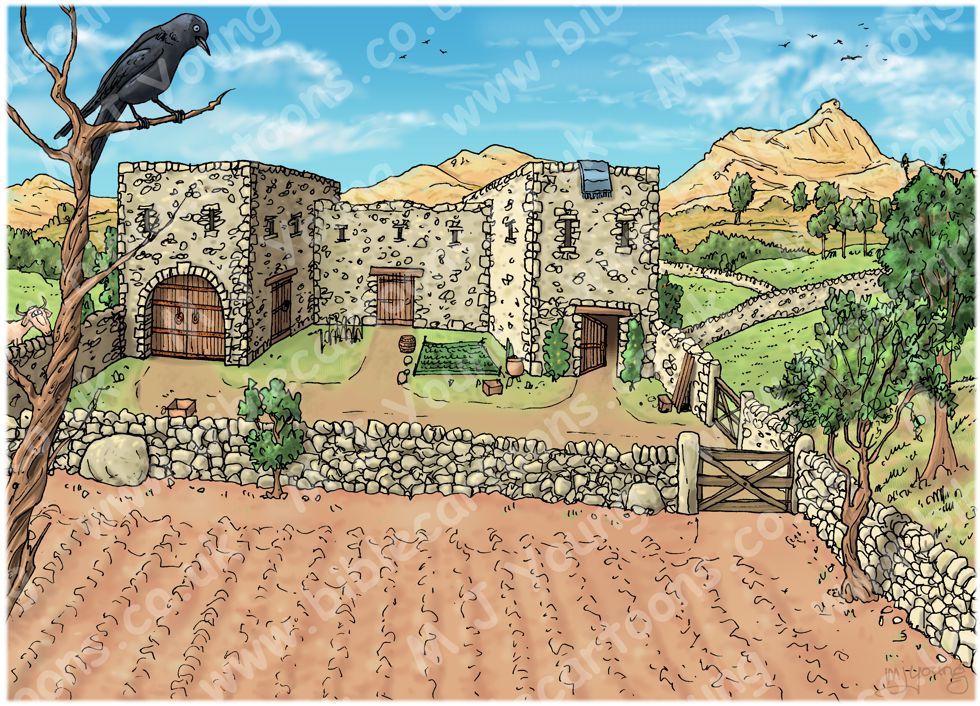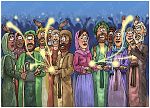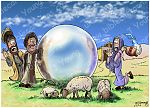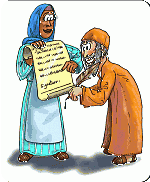Bible Cartoon: Matthew 13 - Parable of the weeds - Scene 01 - Good seed planted
Click on Add to cart button below shopping cart.
Purchased Bible Cartoons do not have watermarks. Links to Cartoons provided on email once purchase is completed.Bible Book: Matthew
Bible Book Code: 4001302401
Scene no: 1 of 4
Bible Reference & Cartoon Description
Matthew 13:24 (NLT)
Here is another story Jesus told: “The Kingdom of Heaven is like a farmer who planted good seed in his field.”
DRAWING NOTES:
TIME OF DAY:
Unspecified in Bible narrative, I have set this scene in the late morning.
LIGHTING NOTES:
The sun (high in the sky on the left (West) illuminates this scene, casting shadows to the right and below figures and objects.
CHARACTERS PRESENT:
In the foreground, a fictional farmer, sowing seed onto the soil of one of his farm’s fields.
Behind the farmer are various figures of his household.
A cow can be seen on the far left, looking into the farmyard over a stone wall.
A donkey is tied to the barn wall.
A Jackdaw is looking at the farmer from a dead tree branch in the foreground, on the left.
RESEARCH/ADDITIONAL NOTES:
This is the first scene in the depiction of the parable of the weeds. Such plants are called “tares” in older Bibles, the name means weeds, specifically darnel, which are toxic and closely resemble wheat until maturity.
Behind the farmer is his farm, with his house on the right, and the barn (in which he keeps his harvested grains) on the left. There is a small garden patch and various boxes, barrels, and other goods scattered about the farm yard.
Here’s the scene without the figures or donkey in the farm yard.

Background of Matthew 13 – Parable of the weeds – Scene 01 – Good seed planted
Click on the colour bar below to view/buy this Background:
Background of Matthew 13 – Parable of the weeds – Scene 01 – Good seed planted
The dark bird eyeing the farmer on the left is a Coloeus monedula (aka Jackdaw), a small (smaller than other Crows and Rooks) black crow with a distinctive grey ‘hood’ around the back of the head and a black cap. Its pale blue-grey eyes stand out from its plumage. It has a short, stubby beak. The Jackdaw’s call – a familiar hard ‘tchack’ – gives it its name. It will often nest in chimneys, buildings, rock crevices and tree holes. In the air, Jackdaw’s have a faster flight than other, larger corvids and can be very playful, with tumbling aerobatics. In the winter, Jackdaws often come together in groups to roost, sometimes with Rooks, and perform noisy display flights at dusk and dawn. Jackdaws eat insects, seeds and fruit, but will also take eggs and young birds. Jackdaws are typically 13.38 inches (34 cm) in length, with a wingspan of 2 feet 2.5 inches (70cm) and weigh in at about 0.5 pounds (220 grammes).
Bible Doctrine Notes
1:1 THE CHURCH, God’s Kingdom (5.13A)
Jesus spoke in parables to describe the kingdom of God. Although the kingdom is not a man planting seeds, yet it can be compared (to allow for human understanding) to such mundane events. This particular parable describes the current and future aspects of God’s kingdom. The seeds scattered by the farmer, and now growing, refer to the present situation of God’s kingdom, whilst the harvest relates to the future development of the kingdom. At that critical time, the true nature and character of everyone will be revealed, and judged. In the mean time, the church represents God’s kingdom here on earth; not as a separate, isolated group of people, but mixed up in a world full of evil people, themselves influenced and directed by Satan.





